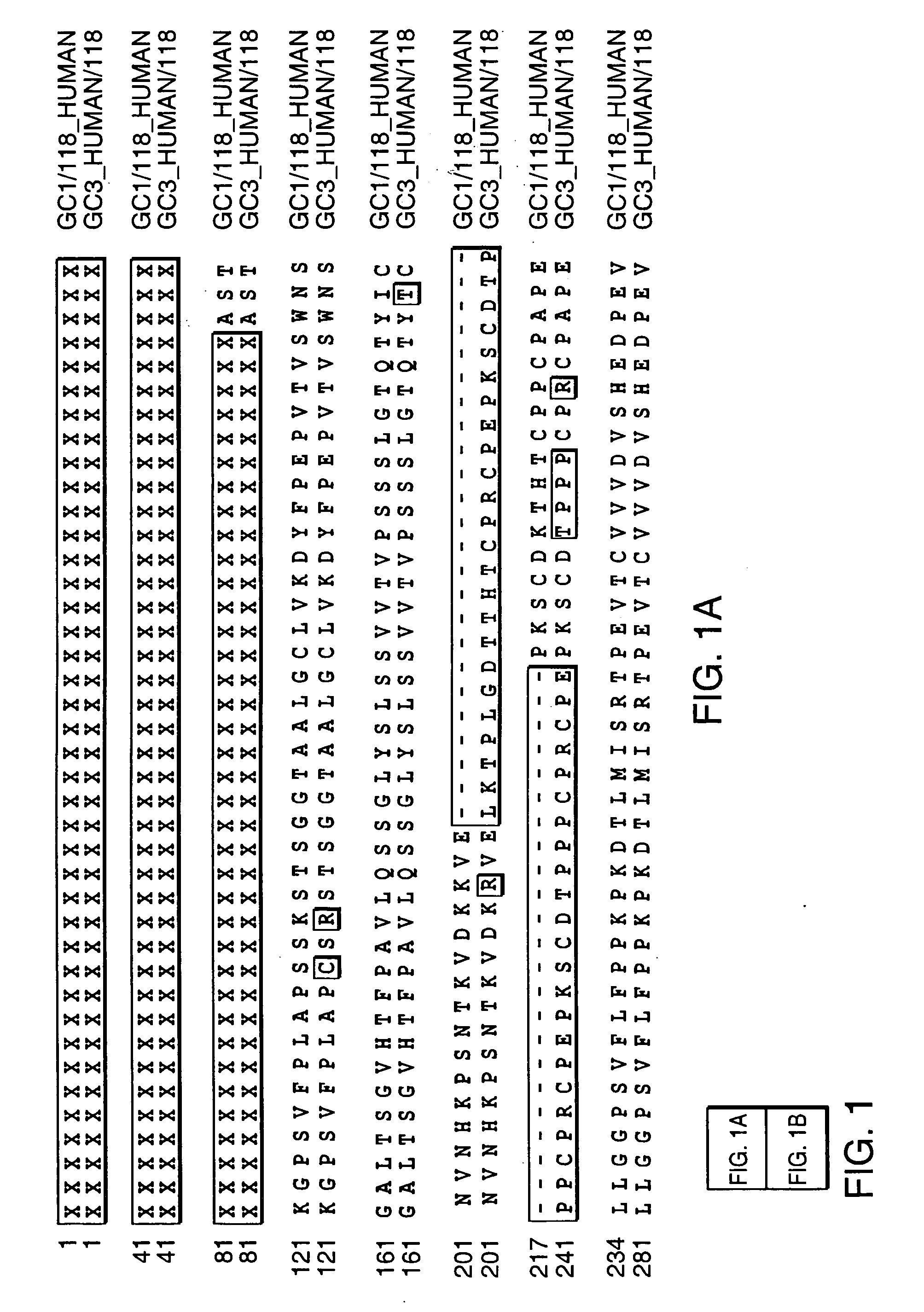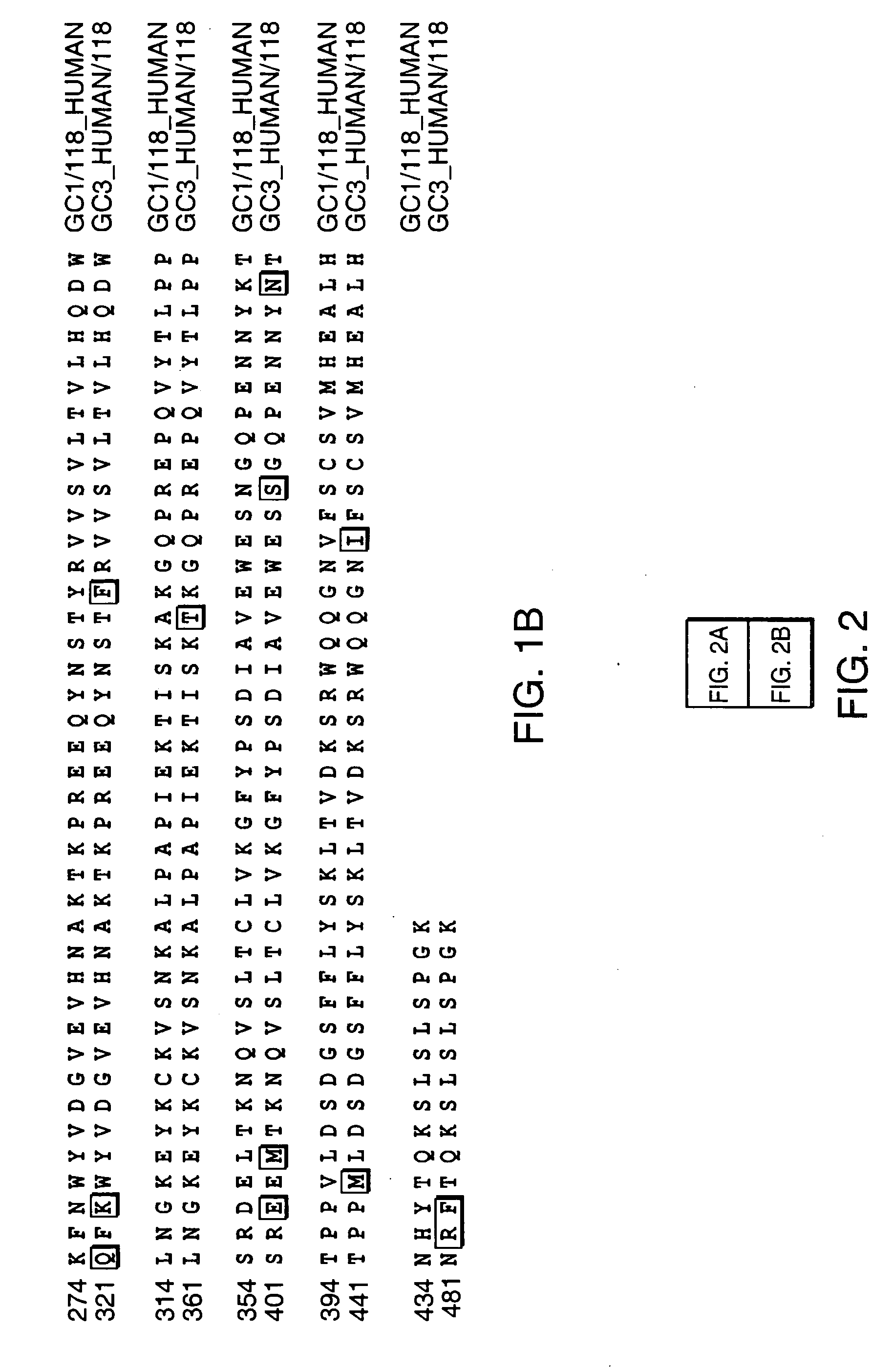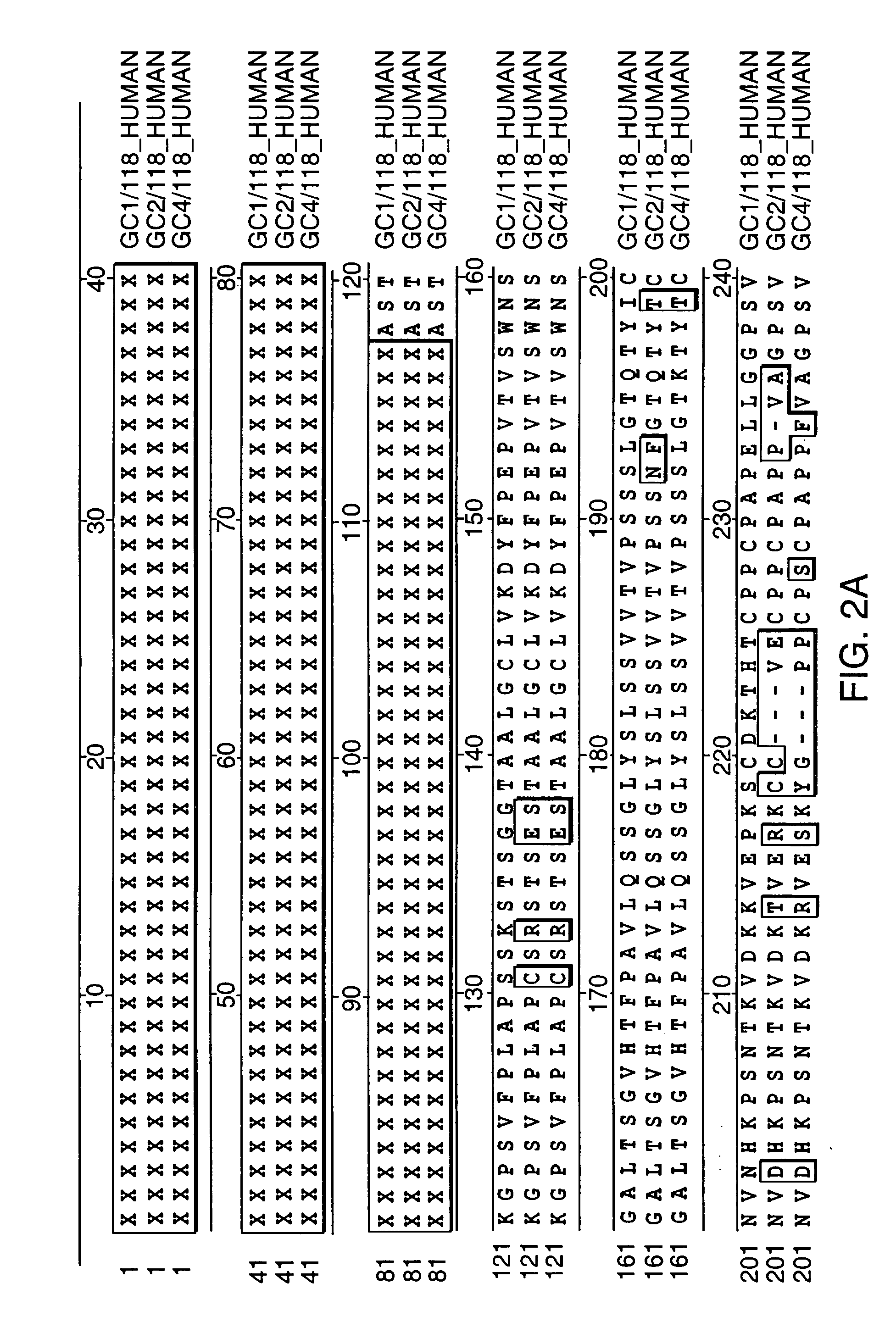Enhancing the circulating half-life of antibody-based fusion proteins
a fusion protein and antibody technology, applied in the field of fusion proteins, can solve the problems of limited utility of recombinantly-produced antibody-based fusion proteins, difficult to predict what properties the end product will retain from the parent molecules, etc., and achieve the effects of enhancing the in vivo circulating half-life of antibody-based fusion proteins, reducing binding affinity for fc receptors, and reducing binding affinity
- Summary
- Abstract
- Description
- Claims
- Application Information
AI Technical Summary
Benefits of technology
Problems solved by technology
Method used
Image
Examples
example 1
Improving the in vivo Circulating Half-Life of an Antibody-IL2 Fusion Protein by Class Switching from Cγ1 to Cγ4 IgG Constant Regions
[0033] According to the present invention, antibody-based fusion proteins with enhanced in vivo circulating half-lives can be obtained by constructing antibody-based fusion proteins using sequences from antibody isotypes that have reduced or no binding affinity for Fc receptors.
[0034] In order to assess whether the in vivo circulating half-life of the antibody-based fusion protein can be enhanced by using sequences from antibody isotypes with reduced or no binding affinity for Fc receptors, an antibody-IL2 fusion protein with a human Cγ1 constant region (Fc region) was compared to an antibody-IL2 fusion protein with a human Cγ4 Fc region.
1.1 Construction of Antibody-IL2 Fusion Proteins with a Cγ4 IgG Constant Region
[0035] The construction of antibody-IL2 fusion proteins with a Cγ1 constant region has been described in the prior art. See, for exampl...
example 2
Mutating the Human Cγ1 or Cγ3 Gene in Antibody-Based Fusion Protein Constructs to Improve their in vivo Circulating Half-Life
[0048] IgG molecules interact with several molecules in the circulation, including members of the complement system of proteins (e.g., C1q fragment), as well as the three classes of FcR. The important residues for C1q binding are residues Glu318, Lys320, and Lys322 which are located in the CH2 domains of human heavy chains. Tao et al., J. EXP. MED. 178: 661-667 (1993). In order to discriminate between FcR and C1q binding as mechanisms for rapid clearance, we substituted the more drastically altered Cγ2 hinge-proximal segment into the Cγ1 heavy chain. This mutation is expected to affect FcR binding but not complement fixation.
[0049] The mutation was achieved by cloning and adapting the small region between the hinge and the beginning of the CH2 exon of the germ line Cγ1 gene using overlapping polymerase chain reactions (PCR). The PCR primers were designed to ...
example 3
Increasing the Circulating Half-Life of Receptor-Antibody-Based Fusion Proteins
[0053] Several references have reported that the Fc portion of human IgG can serve as a useful carrier for many ligand-binding proteins, or receptors, with biological activity. Some of these ligand-binding proteins have been fused to the N-terminal of the Fc portion of an Ig, such as CD4, CTLA-4, and TNF receptors. See, for example, Capon et al., NATURE 337: 525-531 (1989); Linsley et al., J. EXP. MED. 174: 561-569 (1991); Wooley et al., J. IMMUNOL. 151: 6602-6607 (1993). Increasing the circulating half-life of receptor-antibody-based fusion proteins may permit the ligand-binding protein partner (i.e., the second non-Ig protein) to more effectively (1) block receptor-ligand interactions at the cell surface; or (2) neutralize the biological activity of a molecule (e.g., a cytokine) in the fluid phase of the blood, thereby preventing it from reaching its cellular target. In order to assess whether reducing...
PUM
| Property | Measurement | Unit |
|---|---|---|
| volume | aaaaa | aaaaa |
| concentration | aaaaa | aaaaa |
| concentrations | aaaaa | aaaaa |
Abstract
Description
Claims
Application Information
 Login to View More
Login to View More - R&D
- Intellectual Property
- Life Sciences
- Materials
- Tech Scout
- Unparalleled Data Quality
- Higher Quality Content
- 60% Fewer Hallucinations
Browse by: Latest US Patents, China's latest patents, Technical Efficacy Thesaurus, Application Domain, Technology Topic, Popular Technical Reports.
© 2025 PatSnap. All rights reserved.Legal|Privacy policy|Modern Slavery Act Transparency Statement|Sitemap|About US| Contact US: help@patsnap.com



